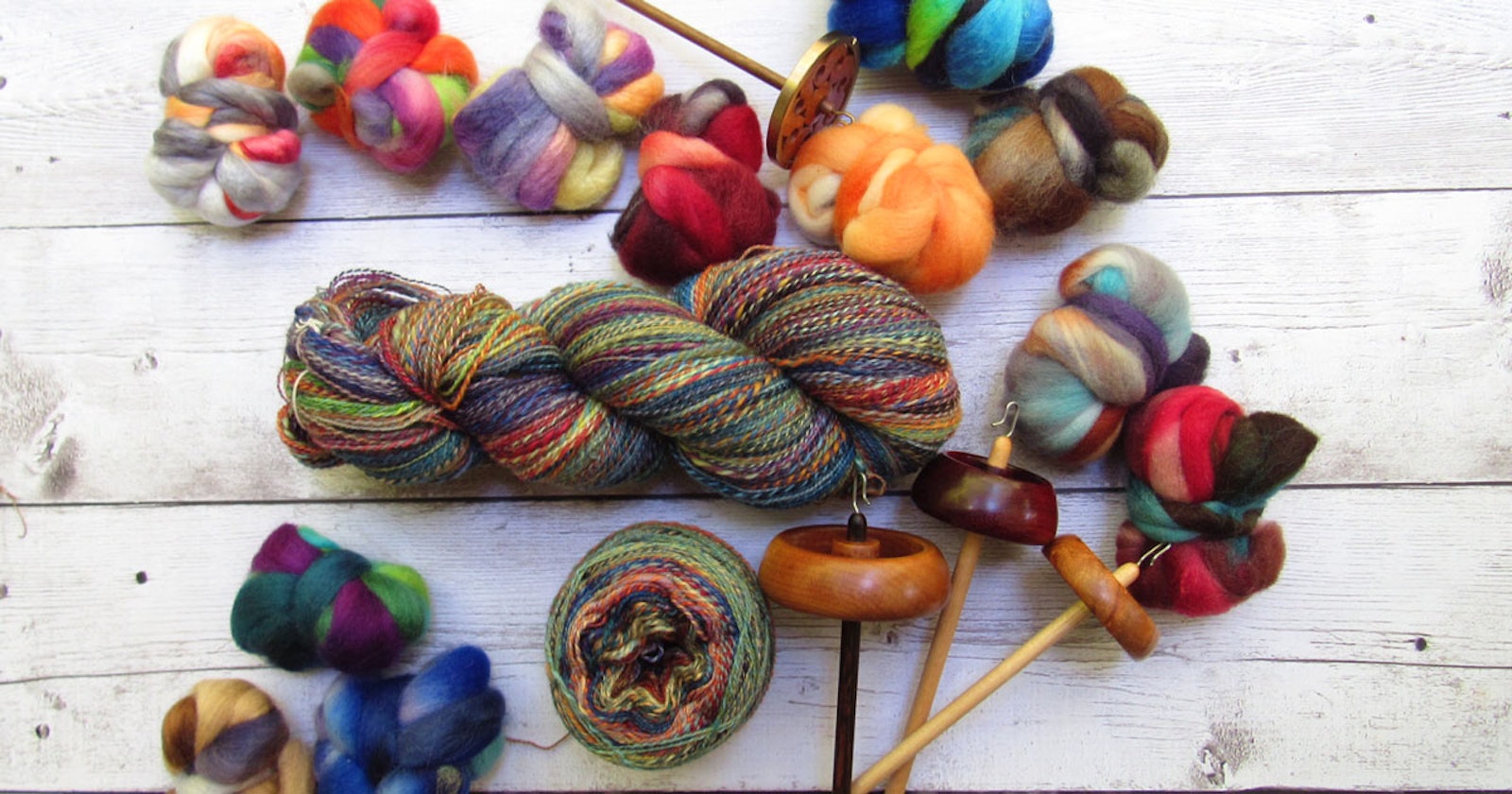This week I unearthed a favorite skein of handspun yarn from long ago: 750 yards of a colorful, laceweight Frankenskein. This was not a traditional Frankenskein (or is that a hankenskein?) made up of leftover lengths of singles plied together but instead came from 4 ounces of odds and ends packed by Into the Whirled, made up of various colorways and fibers.
The time had come to put this handspun yarn to use.
The Proof Is in the Sampling
Checking my Ravelry notes*, I saw that I had spindle spun this skein three years ago, when my focus was more on spinning the skein than on its possibile uses. I was fixated on spinning very fine, high yardage yarn for quite some time.
Today, I realize that there is so much more to successful pattern-and-handspun matching than simply bobbing for patterns. Fiber type, preparation, means of drafting, and even finishing are key considerations when deciding on the end use for one’s yarn. Just because the yardage is there, it doesn’t mean that the pattern and yarn are an ideal match. I’ve learned to ask: How will the fabric wear? Does the pattern call for a drapey yarn or an elastic one? Are the fibers right for the project?
Exactly what does one knit from a laceweight Frankenskeinish handspun yarn?
Spun into a fine 2-ply yarn, the crazy colorful fibers create a more muted, unified palette.
Listen to your Handspun Yarn
According to Ravelry, I’d envisioned knitting myself a simple sleeveless tunic and had even purchased a pattern. In theory, it was a great idea—a colorful layering piece to wear with jeans or leggings. I’d also considered trying to fool the eye into seeing a more unified yarn by striping it against a neutral color such as brown, perhaps for a lightweight summer sweater.
I set about knitting myself swatches using appropriate needle sizes to check gauge—and the swatches showed me some unexpected things about my yarn.
That tunic pattern? It called for knitting the yarn held doubled, and although I liked how that fabric felt in my hand, I stopped swatching once I realized that the colors became a muddied mess when held together. With no good option in my stash to use as a second strand, I moved on, still committed to knitting a wearable, colorful garment.
I narrowed down my possibilities to either a sweet wisp of a cardigan such as Cecily Glowik MacDonald’s Bluebird Cardigan or her Drifting, a pattern I own and have always wanted to knit, or maybe a short-sleeved, shorter-length riff on Isabell Kraemer’s A Hint of Summer).
Using the size 5 knitting needles called for in Drifting as my starting point, I knitted a 4 x 4-inch swatch. (Full disclosure: my swatch is a bit small for truly accurate gauge-checking.) I washed it and set it out to dry. What I saw then was an airy, incredibly elastic wisp of fabric, and even though I had made sure to swatch the louder colors in my skein, they appeared as muted, heathery color shifts once knitted. Though it’s not the bolder pops of colors I’d anticipated, I think I’m going to love this look.
My Future Sweater
The bounciness of this fabric indicates that I could make any of the three light sweater ideas work for me, particularly since it’s so amenable to blocking to almost any breadth. Still, I am going for Drifting. I think the fact that it’s knitted flat, or back and forth, on circular needles and in a plain stockinette stitch will yield the most subtle yet intentional-looking use of this yarn.
By the way, in case you’re wondering why such a boldly dyed fiber mix resulted in a muted yarn, that’s because of the yarn’s fine gauge. Had I simply gone for the color bursts and spun a squishy DK or worsted weight, your eye would be better able to read the colors individually.
I’m going to cast on this littler sweater now. The next time you see this handspun, it will (hopefully) be in its final form.
If you have a stumper of a skein of handspun yarn, grab a few needle sizes and start swatching!
Debbie
*If you don’t use Ravelry to keep up with your spinning, you will be so grateful once you do.
Featured Image: What handspun yarn Frankenskein can you create with scraps of fiber? Photos by Deborah Held


